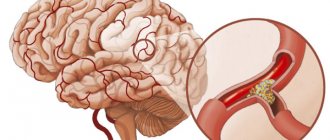Our Hypnosis Center treats neuroses with hypnosis. Hypnosis is the best way to treat neurosis. He finds the true causes of illness hidden in a person’s subconscious and eliminates them. Treatment with hypnosis involves the use of encouraging and suggestive techniques that reduce the effect of external negative factors. Events that are difficult for the patient go away and adaptation to new positive conditions occurs.
Treatment of neuroses with hypnosis is especially effective when the illness is caused by negative beliefs or traumatic experiences. If it is carried out by a professional, the patient is treated even for advanced stages of neurosis. The troubles that have haunted a person for years go away. The duration of sessions and the number are determined individually. This depends on the severity of the disease and the patient’s reactions to the hypnotic state. As a rule, doctors at our center relieve neurosis in 3 sessions.
OCD
A neurotic disorder, part of a complex of mental illnesses: nervousness, obsessive thoughts and other similar diseases.
OCD has two factors:
- Obsessions are obsessive thoughts.
- Compulsions are the automaticity of unconscious actions.
Anxious thoughts make it difficult to simply cope with anxiety. They completely envelop a person’s consciousness, and it is very difficult to get rid of this obsession. The main destructiveness of this disease lies in the understanding of what is happening and the impossibility of somehow influencing it. A person may realize that thoughts do not entail anything good and are completely irrational, but at the same time it is impossible to get rid of them.
You can’t constantly think about how to get rid of fears and obsessive thoughts just by thinking about it - as this will only increase anxiety. Dealing with obsessive thoughts by devoting a large amount of time to them will only enhance their effect and increase nervousness.
To cure this condition, it is worth understanding why OCD occurs. To do this, pay attention to the techniques presented below, and you need to stop constantly scrolling through thoughts in your head.
Features of hypnosis for neurosis
During a hypnosis treatment session, an experienced doctor inserts certain information into the psyche of a person suffering from neurosis, which is then perceived by him as an indication for active action. These are specially selected phrases, the content of which varies depending on the causes of the disorder and the individual condition of the patient.
Treatment of neuroses using hypnosis does not aim to completely displace the impression of a traumatic event from consciousness. On the contrary, everything that laid the foundation for such a state remains in the person’s memory; only the attitude towards it changes. Purposeful positive words remove negative attitudes and direct the work of the psyche in a creative direction. The right attitude allows you to look at the problem from a different point of view and give new meaning to the experienced situation. Hypnosis allows you to activate the internal physical, mental and spiritual resources of the body, accumulate strength and energy to combat neurosis.
The main stages of treatment include:
- Initial consultation and preliminary diagnosis. Based on the results of these treatment interventions, the hypnotherapist selects the appropriate treatment option.
- Conducting a session. During the therapeutic intervention, the doctor uses various techniques to bring the client out of the destructive state.
- Prevention of neuroses. The prolonged therapeutic effect of hypnosis prevents the development of relapses of the disorder.
The powerful therapeutic effect of a series of hypnotic sessions allows you to normalize a person’s mental state, restore the will to live and lost health.
The occurrence of obsessive thoughts
There can be various reasons for the appearance of an obsessive thought, and scientists still cannot fully answer why. But there are certain reasons why a person is subsequently enveloped in such thoughts:
- Experienced psychotraumatic situation.
- The result of prolonged exposure to severe stress.
- Insurmountable doubts.
- Systematic negative memories.
- Influence of close relatives.
- Parental influence.
- The presence of high and low self-esteem.
- Constant excuses for one's own selfishness.
- Unconscious actions leading to self-destruction.
The above factors are a common result of an individual's personality traits.
Hypnosis schools
Many neurologists, psychiatrists and psychotherapists have studied the characteristics of hypnotic effects.
- Nancy school. Hippolyte Bernheim (French neuropathologist) believed that hypnosis is just an influence on the imagination. He said that if you remove the imagination of the subject and the authority of the doctor inducing the trance, no results will be achieved.
- Freud's ideas. In his sessions, psychoanalyst Sigmund Freud hypnotized patients and pressed their foreheads so that they could concentrate on trying to recall repressed memories. Later, Freud nevertheless made a choice in favor of psychoanalysis and the techniques used within its framework.
- Erikson's ideas. Psychiatrist Milton Erickson was one of the most influential hypnotherapists. Ericksonian hypnosis involves presenting information in a gentle form without any authority on the part of the doctor. In this case, the emphasis is on an individual approach, taking into account the characteristics of each individual patient. The main thing is not the instillation of ideas, but the modeling of situations in which the patient can make a decision on his own.
Also, a significant contribution to the development of hypnosis was made by such famous personalities as Jean Martin Charcot, Alfred Binet, Vladimir Bekhterev, Konstantin Platonov, James Braid and others. Psychology professor Nicholas Spanos took an alternative view regarding hypnotic effects. He was convinced that hypnosis as a physical state did not exist - it was only a behavioral reaction associated with high motivation. The patient, wanting to be convinced of the effectiveness of the intervention and prove it to others, begins to succumb to the doctor’s suggestions and perceives his actions as imposed from the outside.
Whether it is worth using hypnosis for VSD - everyone must decide for themselves. Many patients with whom hypnosis techniques were performed note that their sleep has become normal, anxiety has decreased, reactions to stressful situations have changed, self-esteem has increased, and their general condition has improved. It should be noted that it is recommended to undergo hypnotic influence only in professional settings. Otherwise, the consequences may be unpredictable - only a specialist can determine in which problems such an impact will be harmless and effective.
Source: distonija.com
Expressing obsessive thoughts

It is not difficult to understand that you are possessed by obsessive thoughts, because they constantly haunt your consciousness:
- The presence of constant anxiety, manifestation of fear and uncertainty.
- Tiring communication with yourself.
- Doubts regarding one's own actions.
- A strong desire to carry out an immoral act.
- Fear of harming yourself and others.
- Systematic regret for past shameful actions.
- Frequent intimate fantasies about sex that do not materialize in real life.
- The child may have a fear of dying.
- The teenager has a morbid preoccupation with his appearance.
- Fears of contracting a fatal disease and so on...
When oppressed by obsessive thoughts, tension occurs not only emotionally, but also physically. During an obsession, a person may be influenced by the following factors:
- Heart rate increases.
- Shortness of breath and dizziness may occur.
- Nausea may occur.
- Fainting state.
- Sweating and other issues increase.
Self-hypnosis as a cause of panic attacks
Before deciding on a hypnotherapy session, it is important to understand that the main cause of panic attacks is most often self-hypnosis. In this case, the person’s subconscious independently finds a point of vulnerability for itself, in relation to which thoughts are programmed that plunge it into a state of shock.
The cause of panic attacks can be thoughts that the human brain has formed based on the fears and phobias present in the human mind. Most often, people who are highly suspicious and impressionable and have one or more panic disorders are susceptible to this.
Such people independently, without outside help, can plunge their own body into a state of trance:
- speed up your heart rate;
- change blood pressure levels up or down;
- cause nausea;
- feel breathing problems.
With the help of hypnotherapy, a person, without realizing it (even if he sets himself up for completely different behavior all day), can disrupt the fragile interaction between different organs and systems. Thus, sensations arise that are beyond control and cause a person to fear imminent death. If such a problem is left without adequate therapy, there is a high probability of its aggravation when such self-hypnosis becomes too much, which prevents a person from living fully.
How to get rid of obsessions
Below is a treatment for obsessive thoughts and anxiety.
Ignoring
Learning to ignore intrusive thoughts
When you find ideas starting to pop into your head, try to ignore them. Try to be indifferent to them and abstract yourself.
We don’t avoid, but come to accept
You will feel unpleasant, there will be moral and physical suffering. You need to humble yourself, gain strength and survive this moment.
A look of indifference and calm
When you achieve indifference to the tormenting ideas, their severity will significantly decrease. Subsequently, a transformation of consciousness will begin and these thoughts will begin to bother you less and less, but this will take time, maybe a couple of days, or maybe a couple of months.
Control
The essence of the method is to elevate yourself above your fears, taking them for granted. Don’t try to overcome them, but go through life with them, perceiving them as ordinary troubles with the possibility of resolving them. Awareness and acceptance of the problem is the most important action towards healing.
Let's look our fears in the eye
When faced with depressing thoughts that make you overly nervous, try to look at them from a positive perspective. For example, I’ll include the thoughts: “I’m definitely not capable of more” or “Did I turn off the iron?” Reframe your thoughts as follows: “If I think that I am not capable of more, therefore, I think about how to achieve better results, which means I am developing” or “I don’t remember exactly whether the iron is turned off, then it is worth developing mindfulness " You accept the situation and find a rational solution to the problem.
Writing down obsessive thoughts on paper
When thoughts overcome you, close your eyes and relax. Open up the oppressive ideas completely in your subconscious and write them down on a piece of paper, as if pulling them out of your head. Thoughts can be of different types, such as a dialogue, an aphorism or an ordinary word. After reading what you wrote, it doesn't look that scary, right? Burn the sheet of thoughts or tear it into many small pieces.
Replacing negative pictures with positive ones
Delve into memories where you were happy, joyful and peaceful. Remember these moments whenever you have obsessions.
Hypnotherapy for VSD
Vegetovascular dystonia is a condition in which the human psyche is practically defenseless against stressful circumstances. This is why VSD sufferers are prone to developing various psychogenic disorders. Hypnotherapy for VSD can be used when the patient experiences:
- depressive states;
- causeless anxiety;
- neuroses;
- obsessive thoughts;
- sleep disorders;
- phobias.
Hypnosis for VSD can be used both as an independent method and as an addition to other psychotherapeutic techniques. Hypnosis is a state caused by the influence of a hypnotist, which is characterized by a high concentration of attention and susceptibility to suggested ideas. Such a state cannot be caused by force; a successful result depends not only on the skills of the hypnotist, but also on how amenable the patient is to hypnotic influence. I would like to note that many VSD patients are afraid of hypnosis and refuse treatment using this method. Due to their excessive suspiciousness, dystonics believe that in a hypnotic state they can do something shameful or immoral. However, it is known that hypnotized patients can lie and resist suggested ideas, and their memory is preserved. In a state of hypnosis, people do not commit actions that are unacceptable to them and do not display physical strength that is unusual for them. The very fear of the session can already interfere with achieving a successful result. The main methods of hypnosis are:
- trance;
- reframing (changing opinions about a problem);
- relaxation;
- rolling eyes;
- safe place (focusing on breathing and imagining yourself in the safest place);
- visualization (concentration on internal sensations, representation of several levels of the mind);
- induction (concentration on the emotional state).
The use of hypnosis for VSD also has its contraindications. This method is prohibited for patients with heart disease and breathing problems, as well as for patients with epilepsy. In addition, certain mental illnesses may be contraindications.
Only doctors, psychologists and psychotherapists have the right to use hypnosis techniques in their work. It is believed that many people can be put into the light stage of hypnosis, 4 out of 5 into the medium stage, and every fifth into the deep stage.
The effectiveness of hypnosis
The effectiveness of hypnotic influence depends on whether such a technique is indicated for use in a particular person.
You should not treat panic with this method if:
- the person is not susceptible to suggestion;
- there are false attitudes in the patient’s mind (this contraindication is relative, because the hypnosis procedure is carried out to get rid of this);
- lack of trust in the hypnologist;
- the person does not believe in the effectiveness of hypnosis;
- the patient is prone to hysterics.
In any case, before conducting a session, a person should receive the most truthful information about the future impact. Find out all the points that interest him and completely surrender to the hands of a specialist.
Is hypnosis effective in treating panic attacks? Yes, if the following conditions are met:
- the psychotherapist is a professional in hypnosis;
- the patient is open to external influence, trusts the doctor and is ready for change.
To get rid of panic attacks, one properly conducted hypnosis session is enough. But the process of preparing a person for it can take up to a month.
Source: vsdpanika.ru
Captive of illusions
Illusory situations and problems that the human brain constructs, beyond the wishes of its owner, are a relative sign of mental disorders. In this case, hypnotic sessions can improve the functioning of the subconscious, returning it to the path of creation, but not destruction.
When to resort to hypnotic influence should be decided by the specialist who is examining the patient.
Hypnosis as a panacea
People who suffer from panic attacks, after undergoing diagnostic procedures, understand that the reasons for their poor condition lie not in disorders of the heart, blood vessels or stomach, but much deeper, in the subconscious. To get rid of such pathologies, various methods are prescribed, which may include medications, physiotherapeutic procedures, hypnotherapy, including those also indicated in the presence of panic attacks.
You should not assume that a panic attack or other personality disorder will immediately disappear after hypnosis. Although, in fact, this opinion is widespread, people bring to life a picture that has been seen more than once in feature films, when a person plunges into a completely unconscious state in which a psychotherapist molds something new from his psyche.
A striking example of such manipulations can be the once popular sessions of Kashpirovsky, who gave “instructions” to the people who visited him. After such “work,” some of the spectators were left unaffected by the influence, but the other part ended up within the walls of medical institutions, where specialists were forced to improve their mental health by working with the patient’s subconscious.
With the help of hypnosis, you can cope with panic attacks or other personality disorders, but only if the actions of the hypnologist are competent and consistent and are suitable for a particular person. Hypnosis should not be considered a panacea; this opinion is erroneous.
Hypnosis is evil
Among the various methods of intervention in the psyche, hypnosis is considered one of the richest in prejudices. Some people consider this technique to be evil.
This includes 2 categories of people:
- People who experience panic attacks with dizziness and a lot of obsessive thoughts. Any immersion in a trance is perceived by such people as an apocalypse. In fact, it is for them that such an effect can be healing.
- Patients who remember television programs about hypnosis that demonstrated universal human subordination. Such people are afraid to obey anyone.
People who do not believe in hypnotic influence are mostly afraid that during such a session they will be instilled with new attitudes that are alien to their own. This is not true, the human brain constantly, even in an unconscious state, guards its interests, and it is quite difficult to force it to behave differently (within reasonable limits).









